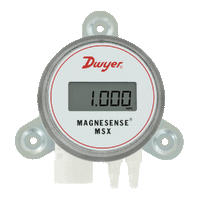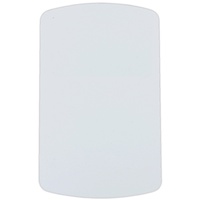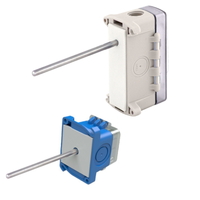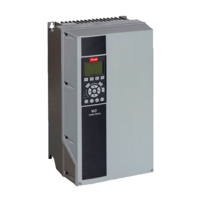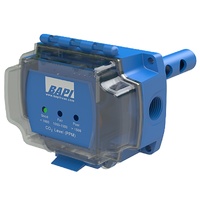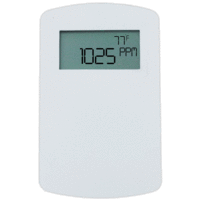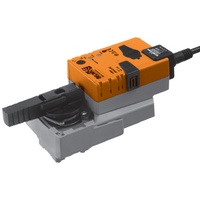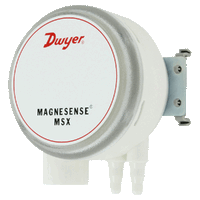
Description
If you’re an industrial sparkie, controls tech, or HVAC tradie, you’ve seen what one bad crimp can do.
A plant room trips. A chiller drops offline. Then the phone rings and you’re back on site fixing something that should’ve been sorted the first time.
In this work, a crimp is the difference between a fault-free system and a repeat call-out. The best crimping tools give you consistent, low-resistance joints that stay tight under load, vibration, and heat.
So, which ones should you trust, and how do you use them for perfect results every time?
What a Crimping Tool Actually Does
A crimping tool is designed to join a cable to a connector, like a lug, terminal, or ferrule, by mechanically compressing the connector barrel around the conductor strands.
The crowning tool works by deforming one or both of the pieces so they can hold the other. This deformity is known as the "crimp", and the process is called crimping.
It’s not about “squashing” metal. A proper crimp cold-welds the two together so they act as a single piece of metal. That means no movement, no gaps, and maximum surface contact for current to flow.
When done correctly with the right die and cable size:
• The joint passes a pull test (typically 80–100% of conductor tensile strength for small-gauge control wiring).
• Electrical resistance stays low, preventing heat build-up under load.
• The connection withstands vibration from plant equipment without loosening.
You’ll need to use crimpers on:
• Control terminals in PLC cabinets
• Fan coil unit wiring in high-rises
• Ferrules on sensor wires so they don’t fray under screw clamps
• Large lugs on HVAC compressors and switchboards
Get the wrong tool, or rush it, and you’ll end up with a connection that works today but fails in three months, or less.
Using a Crimping Tool
You strip the cable to the correct length; no more, no less. You slide on the connector, line it up in the crimper, and apply even pressure.
A decent crimp tool will close with a set force so you’re not relying on “feel.” That means the barrel compresses evenly around the conductor strands without crushing or cutting them.
If you’ve ever wired a panel in Adelaide’s summer heat, you’ll know why a tool that does it right the first time is worth its weight in gold.
Types of Crimping Tools You’ll See on Site
Manual Crimpers
Your basic hand tool. Good for light-gauge work like control wiring and ferrules. Example: a Klein Tools 3005CR, which is simple, tough, and fits in the pouch.
Ratcheting Crimpers
These won’t release until the crimp’s fully formed. Perfect when you need every joint spot-on. If you’re wiring Dwyer or Omega sensors, this keeps the terminations neat and secure.
Hydraulic Crimpers
These are for big cables, over 35mm² and up. Common when fitting lugs in plant rooms or main switchboards. The pump action saves your hands when you’ve got 20 lugs to do in a row.
Die vs Non-Die
• Die-type: Swap out dies to match the connector and cable size. Flexible and accurate.
• Non-die: Fixed jaw profile. Good for repetitive production work but less forgiving if you change cable sizes often.
Picking the Right Crimp Tool for the Job
Don’t just grab whatever’s in the van. Ask yourself: What am I crimping? How often? What’s the cable size?
Examples from the field:
• Control panels: A ratcheting crimper with insulated terminal dies makes clean work in tight spaces.
• Sensor wiring: Slim-head ratcheting ferrule crimper keeps wires tidy inside DIN-rail terminals.
• Field power: Hydraulic crimper with the right die set for copper lugs on HVAC compressors.
Tip: Always check your tool matches the wire size printed on the terminal or lug. Mismatched gear means weak crimps.
Best Practices for Perfect Crimps
Strip the Wire Properly
Use a good-quality stripper. Side cutters nick strands, and that means resistance and heat.
Match Tool, Die, and Connector
Don’t guess. Follow the connector’s spec sheet. That’s why the numbers are printed on the lug barrel.
Apply the Right Pressure
Under-crimping results in loose work. Over-crimping leads to damaged strands. Ratcheting tools take the guesswork out.
Inspect Before Moving On
Look for full barrel compression, no gaps, and no conductor showing past the terminal end. Give it a firm tug before you proceed.
Keep Tools in Shape
Worn dies mean sloppy crimps. Wipe tools down, store them dry, and check calibration every 6–12 months.
Why Quality Beats Cheap Every Time
You can get a $30 knock-off online, but don't be surprised if it starts deforming after a few hundred crimps. In our line of work, one bad connection can trigger arc faults, comms dropouts, or plant shutdowns.
A good crimper holds its calibration, applies even force, and lasts for thousands of cycles. In Australia, you also want tools that meet AS/NZS standards. Inspectors do check, especially on commercial jobs.
Frequently Asked Questions
What’s a crimping tool used for in electrical work?
A crimping tool joins a cable to a connector, such as a lug, terminal, or ferrule, by compressing the connector barrel tightly around the conductor strands. In industrial and HVAC applications, a good crimp can withstand up to 80–100% of the cable’s tensile strength and keep resistance below 0.1 milliohm for low heat build-up. It’s essential for creating safe, vibration-resistant connections without solder.
What’s the difference between a crimp tool and pliers?
Pliers apply uneven manual pressure, which can damage strands or leave gaps. A proper crimp tool uses a matched die profile and controlled compression force, often 1.5–3 tonnes for manual/ratcheting types and up to 12 tonnes for hydraulic models, to create a repeatable, tested connection that meets AS/NZS 3000 standards.
Can one crimper handle different wire sizes?
Yes, but only if it has adjustable jaws or interchangeable dies. For example, a ratcheting ferrule crimper might handle 0.25–6mm² conductors, while a hydraulic crimper with a die set can work on 6–300mm² lugs. Fixed-profile crimpers are limited to one connector size and type.
Are hydraulic crimpers worth it for HVAC?
If you’re regularly crimping 35mm²–185mm² cables on compressors, switchboards, or feeder lines, absolutely. Hydraulic crimpers reduce hand strain, speed up large-lug terminations, and apply consistent pressure every time. They’re especially useful when you’ve got 20+ lugs to fit in one shutdown window.
Where to Get Proper Crimping Tools in Australia
If you’re chasing quality crimpers – manual, ratcheting, or hydraulic – Controls Traders in Adelaide has you sorted. We've got over 40 years of combined industry experience in-house, so you’re not talking to someone who’s never set foot on a job site.
We stock big-name brands like Honeywell, Siemens, Belimo, Johnson Controls, Danfoss, and Schneider. Stock’s on-hand so you’re not left waiting while a job’s half-done. And we ship anywhere, so whether you’re in the city or out bush, you can get the gear you need.
You can shop by brand, shop by product, or call 1300 740 140 for a proper chat about what’ll suit your work.
Reviews
Be The First To Review This Product!
Help other Controls Traders Pty Ltd users shop smarter by writing reviews for products you have purchased.
Crimping Tools for Perfect Connections
60194Description
If you’re an industrial sparkie, controls tech, or HVAC tradie, you’ve seen what one bad crimp can do.
A plant room trips. A chiller drops offline. Then the phone rings and you’re back on site fixing something that should’ve been sorted the first time.
In this work, a crimp is the difference between a fault-free system and a repeat call-out. The best crimping tools give you consistent, low-resistance joints that stay tight under load, vibration, and heat.
So, which ones should you trust, and how do you use them for perfect results every time?
What a Crimping Tool Actually Does
A crimping tool is designed to join a cable to a connector, like a lug, terminal, or ferrule, by mechanically compressing the connector barrel around the conductor strands.
The crowning tool works by deforming one or both of the pieces so they can hold the other. This deformity is known as the "crimp", and the process is called crimping.
It’s not about “squashing” metal. A proper crimp cold-welds the two together so they act as a single piece of metal. That means no movement, no gaps, and maximum surface contact for current to flow.
When done correctly with the right die and cable size:
• The joint passes a pull test (typically 80–100% of conductor tensile strength for small-gauge control wiring).
• Electrical resistance stays low, preventing heat build-up under load.
• The connection withstands vibration from plant equipment without loosening.
You’ll need to use crimpers on:
• Control terminals in PLC cabinets
• Fan coil unit wiring in high-rises
• Ferrules on sensor wires so they don’t fray under screw clamps
• Large lugs on HVAC compressors and switchboards
Get the wrong tool, or rush it, and you’ll end up with a connection that works today but fails in three months, or less.
Using a Crimping Tool
You strip the cable to the correct length; no more, no less. You slide on the connector, line it up in the crimper, and apply even pressure.
A decent crimp tool will close with a set force so you’re not relying on “feel.” That means the barrel compresses evenly around the conductor strands without crushing or cutting them.
If you’ve ever wired a panel in Adelaide’s summer heat, you’ll know why a tool that does it right the first time is worth its weight in gold.
Types of Crimping Tools You’ll See on Site
Manual Crimpers
Your basic hand tool. Good for light-gauge work like control wiring and ferrules. Example: a Klein Tools 3005CR, which is simple, tough, and fits in the pouch.
Ratcheting Crimpers
These won’t release until the crimp’s fully formed. Perfect when you need every joint spot-on. If you’re wiring Dwyer or Omega sensors, this keeps the terminations neat and secure.
Hydraulic Crimpers
These are for big cables, over 35mm² and up. Common when fitting lugs in plant rooms or main switchboards. The pump action saves your hands when you’ve got 20 lugs to do in a row.
Die vs Non-Die
• Die-type: Swap out dies to match the connector and cable size. Flexible and accurate.
• Non-die: Fixed jaw profile. Good for repetitive production work but less forgiving if you change cable sizes often.
Picking the Right Crimp Tool for the Job
Don’t just grab whatever’s in the van. Ask yourself: What am I crimping? How often? What’s the cable size?
Examples from the field:
• Control panels: A ratcheting crimper with insulated terminal dies makes clean work in tight spaces.
• Sensor wiring: Slim-head ratcheting ferrule crimper keeps wires tidy inside DIN-rail terminals.
• Field power: Hydraulic crimper with the right die set for copper lugs on HVAC compressors.
Tip: Always check your tool matches the wire size printed on the terminal or lug. Mismatched gear means weak crimps.
Best Practices for Perfect Crimps
Strip the Wire Properly
Use a good-quality stripper. Side cutters nick strands, and that means resistance and heat.
Match Tool, Die, and Connector
Don’t guess. Follow the connector’s spec sheet. That’s why the numbers are printed on the lug barrel.
Apply the Right Pressure
Under-crimping results in loose work. Over-crimping leads to damaged strands. Ratcheting tools take the guesswork out.
Inspect Before Moving On
Look for full barrel compression, no gaps, and no conductor showing past the terminal end. Give it a firm tug before you proceed.
Keep Tools in Shape
Worn dies mean sloppy crimps. Wipe tools down, store them dry, and check calibration every 6–12 months.
Why Quality Beats Cheap Every Time
You can get a $30 knock-off online, but don't be surprised if it starts deforming after a few hundred crimps. In our line of work, one bad connection can trigger arc faults, comms dropouts, or plant shutdowns.
A good crimper holds its calibration, applies even force, and lasts for thousands of cycles. In Australia, you also want tools that meet AS/NZS standards. Inspectors do check, especially on commercial jobs.
Frequently Asked Questions
What’s a crimping tool used for in electrical work?
A crimping tool joins a cable to a connector, such as a lug, terminal, or ferrule, by compressing the connector barrel tightly around the conductor strands. In industrial and HVAC applications, a good crimp can withstand up to 80–100% of the cable’s tensile strength and keep resistance below 0.1 milliohm for low heat build-up. It’s essential for creating safe, vibration-resistant connections without solder.
What’s the difference between a crimp tool and pliers?
Pliers apply uneven manual pressure, which can damage strands or leave gaps. A proper crimp tool uses a matched die profile and controlled compression force, often 1.5–3 tonnes for manual/ratcheting types and up to 12 tonnes for hydraulic models, to create a repeatable, tested connection that meets AS/NZS 3000 standards.
Can one crimper handle different wire sizes?
Yes, but only if it has adjustable jaws or interchangeable dies. For example, a ratcheting ferrule crimper might handle 0.25–6mm² conductors, while a hydraulic crimper with a die set can work on 6–300mm² lugs. Fixed-profile crimpers are limited to one connector size and type.
Are hydraulic crimpers worth it for HVAC?
If you’re regularly crimping 35mm²–185mm² cables on compressors, switchboards, or feeder lines, absolutely. Hydraulic crimpers reduce hand strain, speed up large-lug terminations, and apply consistent pressure every time. They’re especially useful when you’ve got 20+ lugs to fit in one shutdown window.
Where to Get Proper Crimping Tools in Australia
If you’re chasing quality crimpers – manual, ratcheting, or hydraulic – Controls Traders in Adelaide has you sorted. We've got over 40 years of combined industry experience in-house, so you’re not talking to someone who’s never set foot on a job site.
We stock big-name brands like Honeywell, Siemens, Belimo, Johnson Controls, Danfoss, and Schneider. Stock’s on-hand so you’re not left waiting while a job’s half-done. And we ship anywhere, so whether you’re in the city or out bush, you can get the gear you need.
You can shop by brand, shop by product, or call 1300 740 140 for a proper chat about what’ll suit your work.
Reviews
Be The First To Review This Product!
Help other Controls Traders Pty Ltd users shop smarter by writing reviews for products you have purchased.































